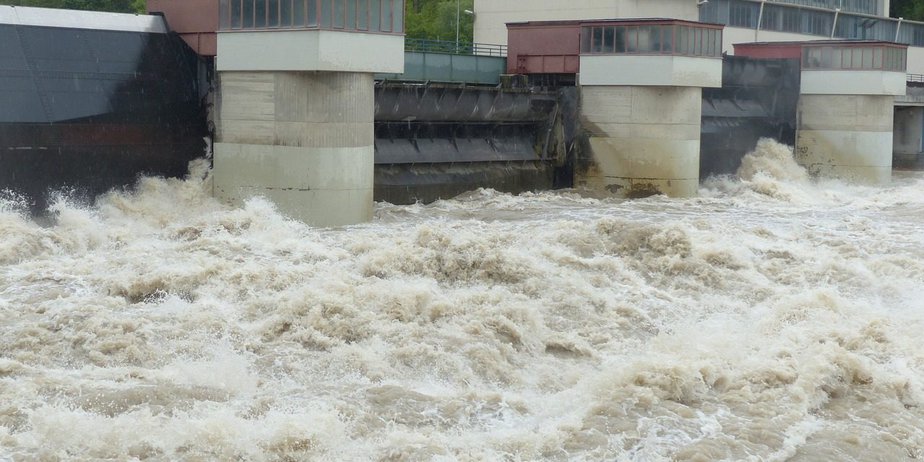Ever found yourself glued to the weather app as a storm rolls in, or wondering what you’d do if floodwaters or a bushfire threatened your street—or your crew’s next callout? You’re not alone. From cyclones in the north to wildfires in the south, severe weather touches every part of Australia, often with little warning for Severe Weather Events.
For families at home and frontline responders alike, being ready for anything is about more than just gear. It’s about knowing what to expect, what you can control, and how to act when things get real. This guide breaks down what you need to know—whether you’re protecting your household, your neighbours, or your team—so you can prepare, respond, and recover with confidence.
You’ll find real-world advice, practical examples, and the kind of tips that actually make a difference when it counts. Whether you’re facing down the next storm season or suiting up for your first shift, let’s walk through it together.
One practical step anyone can take is setting up a reliable Weather Station for Home Safety—these are a great way to keep tabs on changing conditions, spot risks early, and keep both families and crews informed.
Why Severe Weather Preparedness Matters
Australia’s weather can turn dangerous fast—bushfires, flash floods, cyclones, severe storms, heatwaves, and even unexpected cold snaps. No matter where you live or work, it’s not “if,” but “when.” Every year, we see families caught out, businesses unprepared, and emergency crews stretched thin. A bit of knowledge and preparation can save lives and make all the difference.
How to Prepare for Severe Weather Events
At Home or Work
- Know what risks apply in your area—flood, fire, cyclone, storm, heat.
- Make a simple emergency plan—who does what, where do you meet, who checks on neighbours?
- Update and store key contact numbers—local emergency services, neighbours, insurance, utility companies.
- Pack an emergency kit with food, water, medications, torches, batteries, and copies of vital documents.
- Keep a battery-powered radio handy—mobile towers can fail.
- Secure or clear your yard and balcony—loose items become hazards fast.
For Fire Crews & Emergency Teams
- Test comms equipment, weather tracking gear, and backup power sources.
- Review crew roles—everyone should know their job and backup tasks.
- Double-check PPE, hydration, and first aid supplies for all members.
- Plan safe access routes—know alternate roads and hazards in your patch.
- Keep a printed map handy—GPS and mobiles can drop out in bad weather.
- Organise family/household backup for volunteers, so your home’s safe while you’re out on call.
Key Steps for Everyone
Most people know to check the weather, but few keep their gear ready or update their plan after a near-miss. After years of helping people and working alongside crews, one thing stands out—those who prepare don’t just stay safer; they recover faster too.
Don’t wait for an alert to act. Simple steps now (like cleaning gutters, checking trees, or clearing drains) can prevent small hazards from turning into emergencies.
Responding When Severe Weather Hits
For Households, Businesses, and Travellers
- Follow your local emergency alerts—act early, not late.
- Move indoors—avoid windows, unplug electronics, secure pets.
- Don’t drive through floodwaters—most flood deaths in Australia happen in vehicles.
- If fire threatens, leave early—roads can close fast, and smoke kills.
- Keep children, elderly, and those with a disability close by and updated on your plan.
- If you lose power, use torches or lanterns (never candles), and keep fridges closed as long as possible.
On the Fireground or Incident Scene
- Safety first—check your crew, call a PAR (personnel accountability report), and review your triggers for withdrawal.
- Stay aware of weather changes—wind shifts can change everything in seconds.
- Watch for powerlines, falling trees, and flash flooding on tracks.
- Maintain clear comms—short, plain messages work best in chaos.
- If something feels wrong, speak up—everyone has a voice on a safe fireground.
Recovering After Severe Weather: What’s Next?
The emergency might pass quickly, but recovery takes time—sometimes weeks, sometimes months. The most common mistake? Rushing back to normal. After any event, check in with your family, team, or housemates—how’s everyone feeling? Don’t ignore stress, exhaustion, or the need to debrief.
For homes and businesses: assess for hidden dangers before you start cleaning up—live wires, damaged gas lines, unsafe structures, and contaminated water are all risks. Document any damage for insurance. Take photos, save receipts, and write down what happened while it’s fresh.
For fire crews and emergency teams: review what went well, what could be better, and support those affected—whether that’s your own crew or the community. Recovery is a team effort.
Creating an Emergency Plan: Your Safety Net
A written emergency plan is your roadmap—simple, flexible, and shared with everyone. Write down the basics: who’s responsible for what, where to meet if separated, who calls emergency services, who checks on pets, elderly, or neighbours. If you rent, chat with your landlord about what’s already in place (like safe exits or building safety features).
On the fireground, clear pre-incident plans and briefings mean crews can pivot quickly if conditions change. Never assume someone else will “just know what to do”—even the best teams rely on checklists and open comms.
Packing Guides: What To Have Ready (And Why)
For Households & Renters
- 3–5 days’ worth of drinking water and non-perishable food
- Medications, first aid kit, personal hygiene items
- Chargers and power banks for mobiles and radios
- ID, important documents, insurance papers (in waterproof bag)
- A torch, spare batteries, and matches/lighter (in sealed bag)
- Spare clothes, sturdy shoes, weather-appropriate gear
- Pet food, leash, carrier, and comfort item for animals
For Firefighters & Response Crews
- Full set of PPE—clean, dry, checked before every shift
- Spare gloves, helmet, goggles, and extra socks
- Personal hydration system (minimum 2–3L)
- Energy-dense snacks for long calls
- Headlamp or helmet torch, charged and tested
- List of allergies, medications, and emergency contacts (in pocket)
- Notebook, pen, and phone charger (with crew contact numbers)
Safety Tips: Real-World Lessons for Every Aussie
- Practise your plan—do a “walk-through” with kids, pets, or your crew
- Know your local warning system—set up app alerts or follow the radio
- Check drains, gutters, and downpipes before heavy weather
- If you rely on medical gear (like oxygen or mobility aids), let your local emergency service know ahead of time
- For fire crews: run a pre-shift gear check—missing one small item can change everything
- Don’t be afraid to over-prepare—it’s always better to stand down than scramble
Common Mistakes & How to Avoid Them
In Households & Communities
- Waiting too long to act or evacuate
- Relying solely on mobile phones for alerts
- Not practising the emergency plan with the whole household
- Forgetting to pack ID, medications, or pet essentials
- Assuming “it won’t happen here”—every postcode has risks
For Fire Crews & Responders
- Failing to double-check comms or backup gear before deployment
- Ignoring fatigue or working past safe limits
- Not updating family or support at home during extended callouts
- Skipping the post-incident debrief—missed learning is missed safety
- Underestimating the mental toll—support your mates and yourself
Want more in-depth tips for different disasters? See our guides on bushfire readiness or read our power outage checklist.
Frequently Asked Questions
Q: What’s the first thing I should do when a severe weather warning is issued?
Check your plan, alert your household or team, and start actioning the first steps—like moving inside, securing gear, or preparing to leave. Don’t wait for a “final” alert—early action saves lives and stress.
Q: How can I prepare if I rent or live in an apartment?
You still need a plan—know your exits, where to shelter, and what your building’s emergency procedures are. Pack a portable kit, and talk with your landlord or body corporate about risk-reduction steps (like safe storage or window locks).
Q: What about pets, the elderly, or people with disabilities?
Include their needs in your plan—medications, mobility aids, comfort items, backup power. Practise evacuating with everyone, and let your local emergency service know of special requirements if you need help during an emergency.
Q: What’s the biggest mistake new volunteers or crews make?
Not speaking up early—if you spot a problem with gear, plans, or your own readiness, say something before you roll out. Even experienced teams get caught off guard if assumptions go unspoken.
Q: Do I really need to practise my plan?
Absolutely. In a real emergency, nerves and chaos set in fast. A “walk-through” means you know what to grab, where to go, and how to help others—even with the adrenaline pumping.
Take five minutes now to start your plan—talk with your family, your housemates, or your crew. Being prepared isn’t about fear; it’s about peace of mind and knowing you can handle whatever comes your way.
Share this guide with a neighbour or your brigade, or print it out to keep handy—every action counts.
This article was created using practical emergency preparedness and firefighting advice and reviewed for clarity. It is intended as general public information for Australian households, communities, and emergency service teams.



